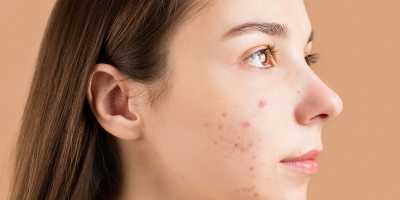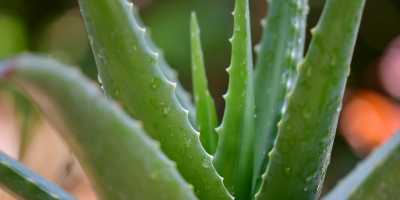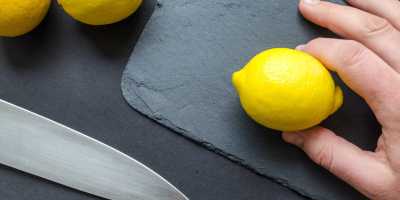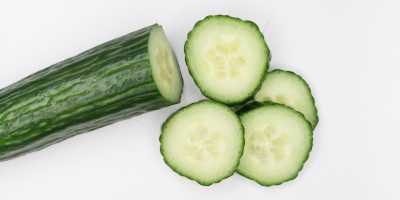10 Natural Remedies for Clearing Acne
Acne is a common skin condition that affects people of all ages and can have a significant impact on self-esteem. While there are many over-the-counter and prescription treatments available, some people prefer to try natural remedies. Homemade remedies for acne have gained popularity in recent years, as they are often affordable and easy to access. However it is important to note that not all homemade remedies are effective or safe.
It is essential to approach homemade remedies for acne with caution, as some ingredients may be irritating to the skin or even worsen the condition. That said, there are some tried and true remedies that can help reduce acne and improve the overall health of your skin. In this article we will explore ten effective homemade tricks for eliminating acne along with tips on how to use them safely and effectively.
Remember that homemade remedies should not replace medical advice or prescribed treatments. If you have severe or persistent acne, it is best to consult with a dermatologist or healthcare provider. With that in mind let's dive into ten homemade tricks for eliminating acne that you can try at home.
-
Tea tree oil
Tea tree oil has antibacterial and anti-inflammatory properties, making it effective at reducing acne. Apply a small amount of tea tree oil directly to pimples using a cotton swab or pad.
-
Tea tree oil is very potent, so it's important to dilute it before applying it to your skin. You can mix a few drops of tea tree oil with a carrier oil like coconut oil or jojoba oil to dilute it.
-
Before using tea tree oil for the first time it's a good idea to do a patch test to make sure you're not allergic or sensitive to it. Apply a small amount of diluted tea tree oil to your inner forearm and wait 24 hours to see if there is any adverse reaction.
-
When applying tea tree oil to your skin, be sure to only apply it to the affected areas and avoid getting it in your eyes or mouth.
-
Tea tree oil can be drying to the skin, so it's important to moisturize after using it. You can use a lightweight, non-comedogenic moisturizer to keep your skin hydrated without clogging pores.
-
It's important to note that tea tree oil may not be effective for everyone. If you don't see improvement in your acne after using tea tree oil for a few weeks, it may be time to try a different treatment or consult with a dermatologist.
-
Be sure to store your tea tree oil in a cool dark place to extend its shelf life. And always check the expiration date before using it on your skin.
-
-
Honey and cinnamon mask
Mix equal parts honey and cinnamon powder to create a paste. Apply the paste to your face and leave it on for 10-15 minutes before rinsing off with warm water. Honey has antibacterial properties while cinnamon can help to reduce inflammation.
-
Choose high-quality raw honey for best results. Raw honey has not been processed or heated so it retains more of its natural antibacterial properties.
-
Test the mixture on a small area of your skin before applying it to your whole face. Some people may be allergic or sensitive to cinnamon so it's important to check for any adverse reactions.
-
You can also add a few drops of tea tree oil or aloe vera gel to the honey and cinnamon mixture for added antibacterial and anti-inflammatory benefits.
-
If you have sensitive skin, use this treatment sparingly or skip it altogether. Cinnamon can be irritating to some skin types and honey is sticky and may be difficult to remove completely.
-
Rinse your face thoroughly with warm water after using the honey and cinnamon paste. Use a gentle cleanser to remove any remaining residue and follow up with a moisturizer to keep your skin hydrated.
-
Remember that natural remedies like honey and cinnamon may take longer to see results compared to chemical treatments. Be patient and consistent with your skincare routine for best results.
-
-
Apple cider vinegar
Dilute apple cider vinegar with water in a 1:3 ratio. Apply the solution to your face using a cotton pad and leave it on for 10-15 minutes before rinsing off with warm water. Apple cider vinegar has antibacterial and exfoliating properties, which can help to reduce acne and improve the texture of your skin.
-
Start with a lower concentration of apple cider vinegar and gradually increase the amount as your skin gets used to it. Using too strong a solution can cause irritation and dryness.
-
Avoid using apple cider vinegar if you have sensitive or broken skin, as it can be irritating. And if you experience any burning or stinging during the treatment, rinse your skin with water immediately.
-
Use raw, unfiltered apple cider vinegar for best results. This type of vinegar contains the "mother" which is a colony of beneficial bacteria and enzymes that contribute to its health benefits.
-
After using the apple cider vinegar solution, rinse your face thoroughly with warm water and follow up with a moisturizer to prevent dryness.
-
Some people find that using apple cider vinegar as a toner can help to improve the overall appearance of their skin. To do this dilute the vinegar as directed and apply it to your face using a cotton pad or spray bottle.
-
Remember that apple cider vinegar is not a miracle cure for acne, and it may not work for everyone. Be patient and consistent with your skincare routine, and don't be afraid to seek professional advice if your acne is severe or persistent.
-
-
Aloe vera
Apply aloe vera gel directly to your face and leave it on for 10-15 minutes before rinsing off with warm water. Aloe vera has anti-inflammatory and soothing properties making it effective at reducing redness and swelling associated with acne.
-
Use pure, organic aloe vera gel for best results. Avoid gels that contain added fragrances or preservatives, as these can be irritating to your skin.
-
If you have an aloe vera plant at home, you can extract the gel directly from the leaves. Simply cut a leaf from the plant and slice it open to reveal the gel inside.
-
You can also mix aloe vera gel with other natural ingredients, such as honey or tea tree oil, for added benefits.
-
If you have oily skin, aloe vera can be used as a lightweight moisturizer that won't clog your pores. Apply a small amount to your face after cleansing and toning.
-
Be sure to rinse your face thoroughly with warm water after using aloe vera gel, as it can be sticky and difficult to remove completely.
-
Aloe vera is generally safe for most people to use, but if you experience any itching, burning or redness during the treatment, stop using it immediately.
-
Remember that while aloe vera can help to soothe and reduce inflammation, it may not be effective at treating all types of acne. Be patient and consistent with your skincare routine and don't hesitate to seek professional advice if your acne is severe or persistent.
-
-
Baking soda
Mix baking soda with water to create a paste. Apply the paste to your face and gently massage in circular motions before rinsing off with warm water. Baking soda has exfoliating properties, which can help to remove dead skin cells and unclog pores.
-
Be careful not to over-exfoliate your skin with baking soda, as this can cause irritation and redness. Limit your use to once or twice a week, and be gentle when applying and massaging the paste onto your skin.
-
Test the baking soda paste on a small area of your skin first to make sure you're not allergic or sensitive to it. If you experience any itching burning, or redness, stop using it immediately.
-
Don't use baking soda on broken or irritated skin, as this can further aggravate the area and cause discomfort.
-
You can also mix baking soda with other natural ingredients, such as honey or lemon juice, for added benefits. Honey has antibacterial properties and can help to moisturize your skin, while lemon juice can help to brighten and even out your complexion.
-
After using the baking soda paste, be sure to moisturize your skin with a non-comedogenic moisturizer to prevent dryness and flakiness.
-
Remember that baking soda should not be used as a replacement for your regular acne treatment. It can help to exfoliate and unclog pores, but it may not be effective at treating all types of acne.
-
-
Lemon juice
Apply freshly squeezed lemon juice to your face using a cotton pad and leave it on for 10-15 minutes before rinsing off with warm water. Lemon juice has antibacterial and exfoliating properties, making it effective at reducing acne and brightening your skin.
-
Be careful not to use too much lemon juice on your skin as it can be acidic and cause dryness, redness, or irritation. Dilute it with water if needed, and start with a small amount to see how your skin reacts.
-
Avoid using lemon juice on open wounds or broken skin as it can cause stinging or burning sensations.
-
Do not expose your skin to sunlight or UV rays after using lemon juice, as it can make your skin more sensitive to damage and increase your risk of sunburn or hyperpigmentation.
-
Lemon juice can also be mixed with other natural ingredients, such as honey or yogurt, for added benefits. Honey has antibacterial properties and can help to moisturize your skin while yogurt can soothe and calm inflamed skin.
-
After using lemon juice be sure to moisturize your skin with a non-comedogenic moisturizer to prevent dryness and flakiness.
-
Remember that lemon juice should not be used as a replacement for your regular acne treatment. It can help to exfoliate and reduce inflammation, but it may not be effective at treating all types of acne.
-
-
Oatmeal mask
Cook plain oatmeal according to the instructions on the package. Once cooled apply the oatmeal to your face and leave it on for 10-15 minutes before rinsing off with warm water. Oatmeal has anti-inflammatory properties which can help to reduce redness and swelling associated with acne.
-
You can mix in other ingredients with the oatmeal to enhance its acne-fighting properties. For example, honey has antibacterial properties, while tea tree oil has anti-inflammatory properties. Mixing these ingredients with oatmeal can help to create a more potent mask for treating acne.
-
Before applying the oatmeal mask be sure to cleanse your face thoroughly to remove any dirt, oil or makeup. This will help to ensure that the mask can penetrate your skin more effectively.
-
Avoid using hot water to rinse off the oatmeal mask, as it can further irritate your skin. Instead, use lukewarm water and gently pat your face dry with a clean towel.
-
If you have sensitive skin, do a patch test before using oatmeal on your face. Apply a small amount of oatmeal to a small area of your skin and wait 24 hours to see if there is any adverse reaction.
-
Remember that while oatmeal can help to soothe and calm your skin, it may not be effective at treating all types of acne. If your acne persists or worsens, consult a dermatologist for professional advice.
-
-
Cucumber
Cut a cucumber into slices and place them on your face for 10-15 minutes before removing. Cucumber has anti-inflammatory and hydrating properties making it effective at reducing redness and inflammation associated with acne.
-
You can also blend the cucumber into a paste or juice and apply it to your face using a cotton pad or ball. This can help to distribute the cucumber's benefits more evenly across your skin.
-
For an even more cooling and soothing effect, refrigerate the cucumber slices or juice for a few minutes before applying to your face.
-
Cucumbers are rich in vitamins and minerals that are beneficial for your skin, including vitamin C vitamin K and potassium. Eating cucumbers regularly can help to support overall skin health and prevent acne from forming.
-
In addition to using cucumber topically you can also create a refreshing cucumber and mint water to drink throughout the day. This can help to hydrate your skin from the inside out and promote a clear complexion.
-
Be sure to wash your face thoroughly before and after using cucumber to remove any dirt, oil or makeup that may be on your skin. This will help to ensure that the cucumber can work effectively to reduce inflammation and redness.
-
-
Garlic
Crush a clove of garlic and apply the paste to your face using a cotton pad. Leave it on for 10-15 minutes before rinsing off with warm water. Garlic has antibacterial properties, making it effective at reducing acne-causing bacteria.
- Do a patch test first to make sure you're not allergic or sensitive to garlic.
- Garlic has a strong odor so you may want to rinse your face with water mixed with a few drops of lemon juice to help get rid of the smell.
- Don't leave garlic on your skin for too long as it can cause irritation and redness.
- If you have sensitive skin, you can mix the garlic paste with some honey or aloe vera gel to help soothe and hydrate your skin.
- It's best to use fresh garlic rather than pre-packaged garlic paste or powder, as these may contain preservatives or additives that can irritate your skin.
-
Green tea
Brew a cup of green tea and allow it to cool. Once cooled apply the green tea to your face using a cotton pad and leave it on for 10-15 minutes before rinsing off with warm water. Green tea has antioxidant and anti-inflammatory properties which can help to reduce acne and improve the overall health of your skin.
- Try using green tea as a toner by brewing a strong cup of green tea and allowing it to cool. Apply the green tea to your face using a cotton pad and leave it on for 10-15 minutes before rinsing off with warm water. You can also store the green tea in a spray bottle and spritz it onto your face throughout the day for a refreshing and acne-fighting boost.
- Use green tea in combination with other ingredients, such as honey or aloe vera gel, to create a DIY face mask that can help to reduce acne and improve the overall health of your skin.
- Drink green tea regularly as a part of a healthy diet to help improve the health of your skin from the inside out. Green tea contains antioxidants that can help to protect your skin from damage and inflammation that can contribute to acne.
Remember, it's important to be consistent with your skincare routine and to be patient when trying new treatments. Some homemade remedies may not work for everyone so it's important to listen to your skin and adjust your routine accordingly. Additionally if you have severe or persistent acne, it's important to consult with a dermatologist for professional treatment options.





